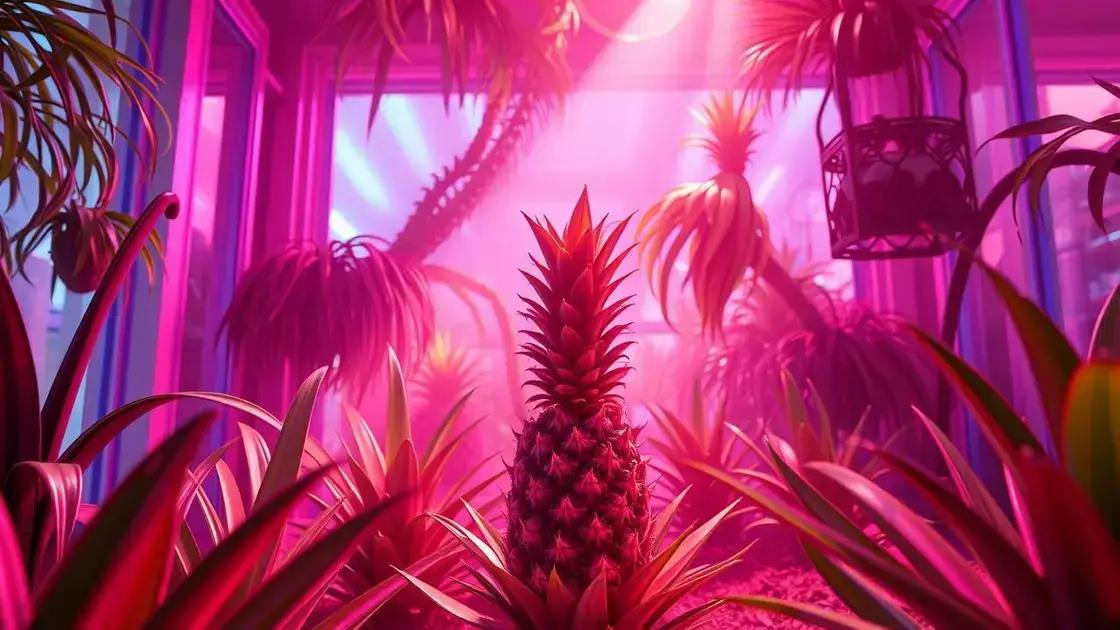How to Care for a Pineapple Plant Indoors: 5 Essential Tips for Success
How to care for a pineapple plant indoors can transform your indoor space into a lush paradise. You may be wondering if these tropical beauties can thrive in your home. With just the right care, a pineapple plant not only adds a vibrant touch to your decor but can also yield delicious fruit!
Table of Contents
ToggleEssential tips for pineapple plant care indoors
How to care for a pineapple plant indoors begins with understanding the specific needs of this exotic tropical plant. Successfully growing a pineapple indoors requires attention to light, water, temperature, and soil conditions. Here are some essential tips to keep your pineapple plant thriving in your home environment.
Optimal light conditions for pineapple plants
- Pineapple plants thrive in bright, indirect sunlight.
- Place them near a south-facing window for best results.
- Consider using grow lights if natural light is limited.
Watering and fertilizing your pineapple
- Water your pineapple plant when the top inch of soil feels dry.
- Use well-draining soil to avoid root rot.
- Fertilize with a balanced fertilizer every six weeks during the growing season.
Maintaining the right temperature and humidity
- Keep your indoor pineapple plant in a warm spot, ideally between 65°F (18°C) and 85°F (29°C).
- Humidity levels around 50% are optimal; consider a humidity tray if your space is dry.
Pineapple pest management
- Regularly check for pests like spider mites and mealybugs.
- Use a mild insecticidal soap to treat infestations.
For more tips, consider exploring indoor gardening techniques that suit your pineapple plant’s needs.
Best light conditions for your indoor pineapple

Best light conditions for your indoor pineapple are crucial for its growth and fruit production. Pineapple plants thrive when they receive adequate light, mimicking their natural environment. Here are some key factors to consider for optimal light exposure.
Types of light suitable for indoor pineapples
- Natural sunlight: South-facing windows provide the best light conditions.
- Artificial grow lights: Consider full-spectrum LED grow lights if natural light is insufficient.
- Indirect light: Avoid direct harsh sunlight to prevent leaf burn.
Lighting duration for pineapple plants
- Provide 12 to 14 hours of light daily for optimal growth.
- Use a timer for consistency in lighting schedules.
Signs your pineapple plant needs more light
- Stunted growth: If your plant isn’t growing as expected, increase light exposure.
- Pale leaves: Yellowing or leggy leaves indicate insufficient light.
- Slow production: A lack of light can lead to delayed fruiting.
By ensuring your pineapple plant receives the right light conditions, you can enjoy healthy growth and fruitful yields. For additional tips, consider exploring indoor gardening techniques that enhance plant care.
Watering and fertilizing your pineapple plant effectively
Watering and fertilizing your pineapple plant effectively is essential for its health and productivity. Proper care ensures your pineapple can thrive indoors, producing vibrant leaves and delicious fruit. Here are some key practices for maintaining optimal moisture and nutrient levels.
Watering guidelines for pineapple plants
- Water your pineapple plant when the top inch of the soil is dry.
- Ensure adequate drainage to prevent water from sitting in the pot.
- Use room temperature water to avoid shocking the roots.
Signs of overwatering or underwatering
- Overwatering may cause yellow leaves and root rot.
- Underwatering results in wilting and dry leaf tips.
Fertilization tips for pineapple plants
- Use a balanced, water-soluble fertilizer every six weeks during the growing season.
- Consider a fertilizer with higher potassium content to support fruit development.
- Follow the manufacturer’s instructions to prevent nutrient burn.
Remember, testing the soil moisture regularly will help you find a perfect watering schedule for your pineapple plant. For additional insights, consider exploring indoor gardening techniques that enhance your plant care experience.
In conclusion
Caring for a pineapple plant indoors requires attention to lighting, watering, and fertilizing practices. By providing the right conditions and understanding the needs of your pineapple plant, you can enjoy healthy growth and potentially fruitful harvests. Remember to regularly assess your plant’s needs, adjust care practices as necessary, and explore additional resources for better indoor gardening success. For even more valuable insights, check out these tips on enhancing your indoor garden.

